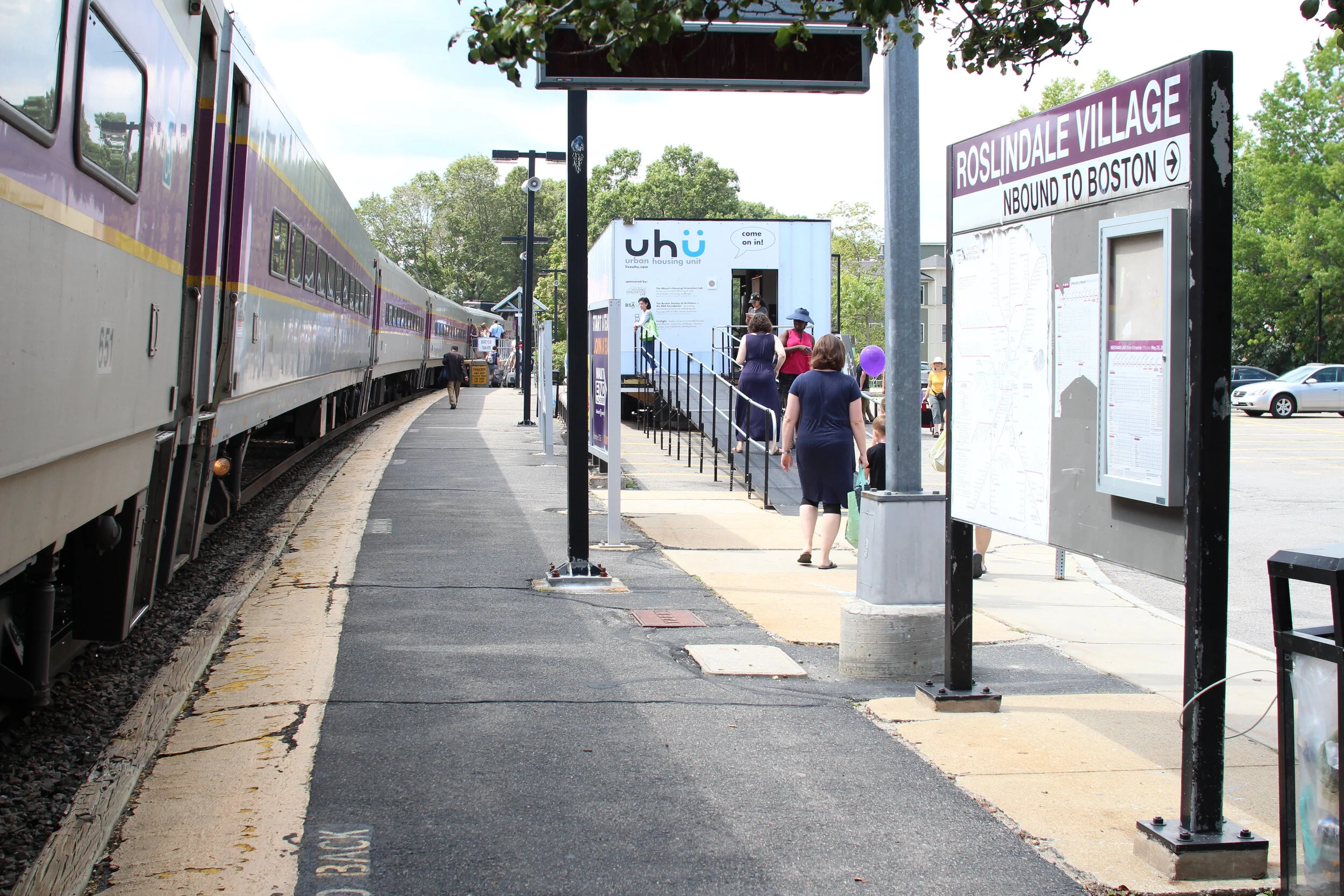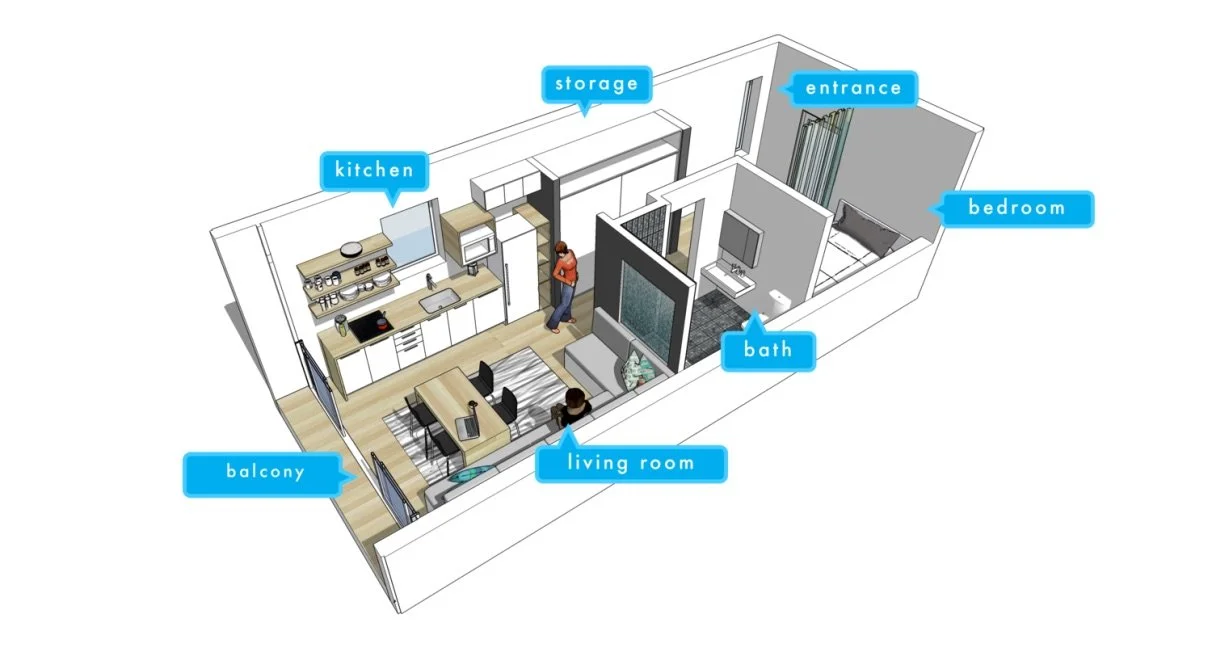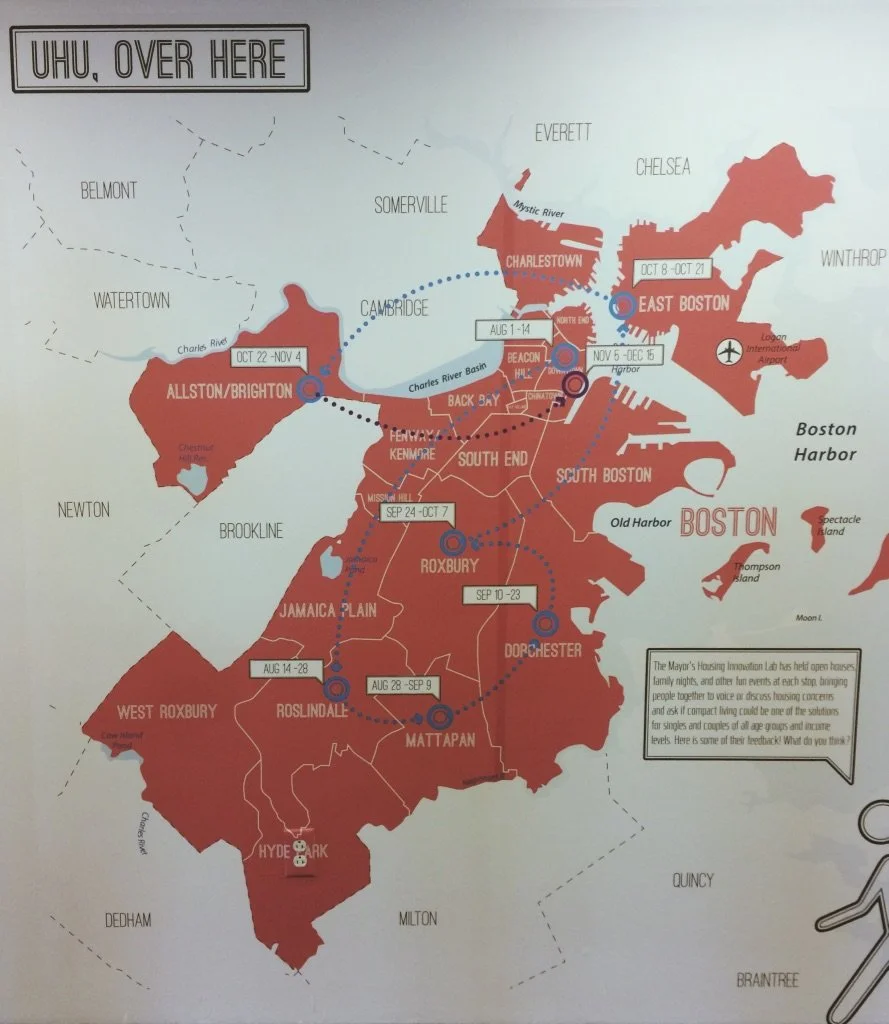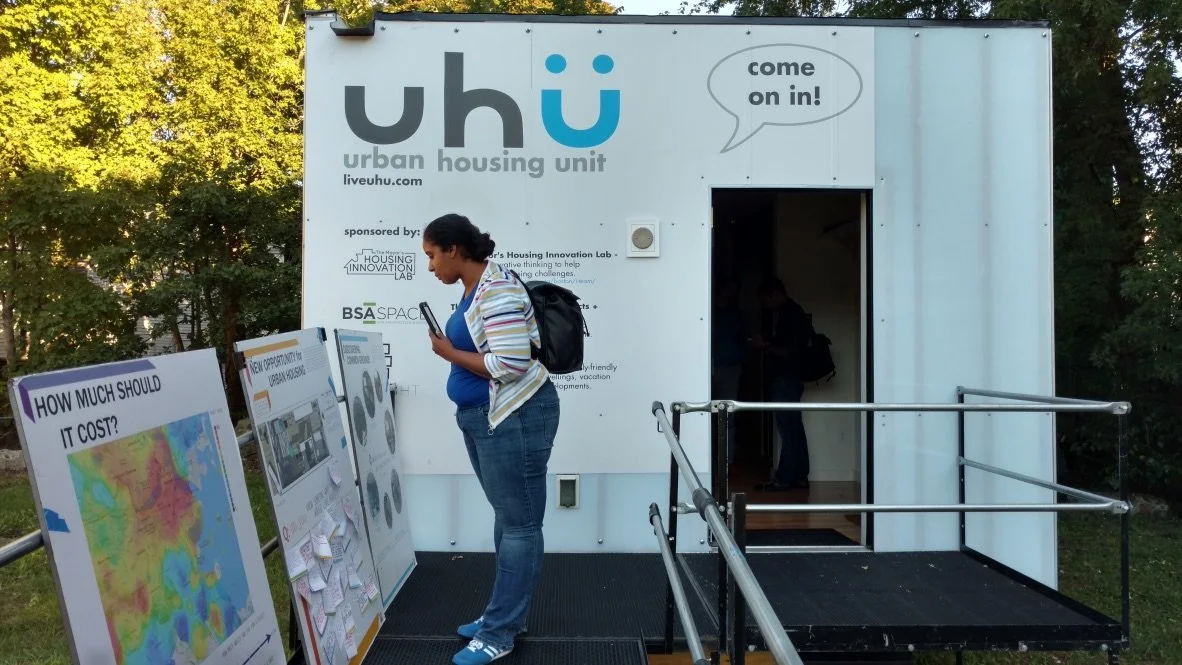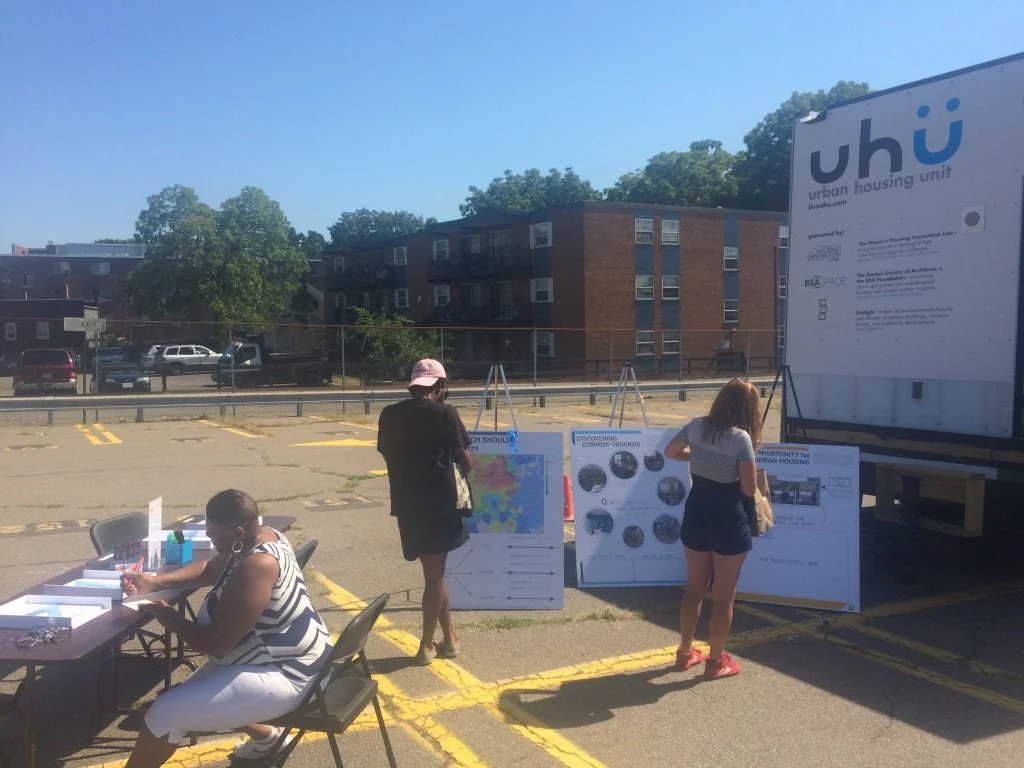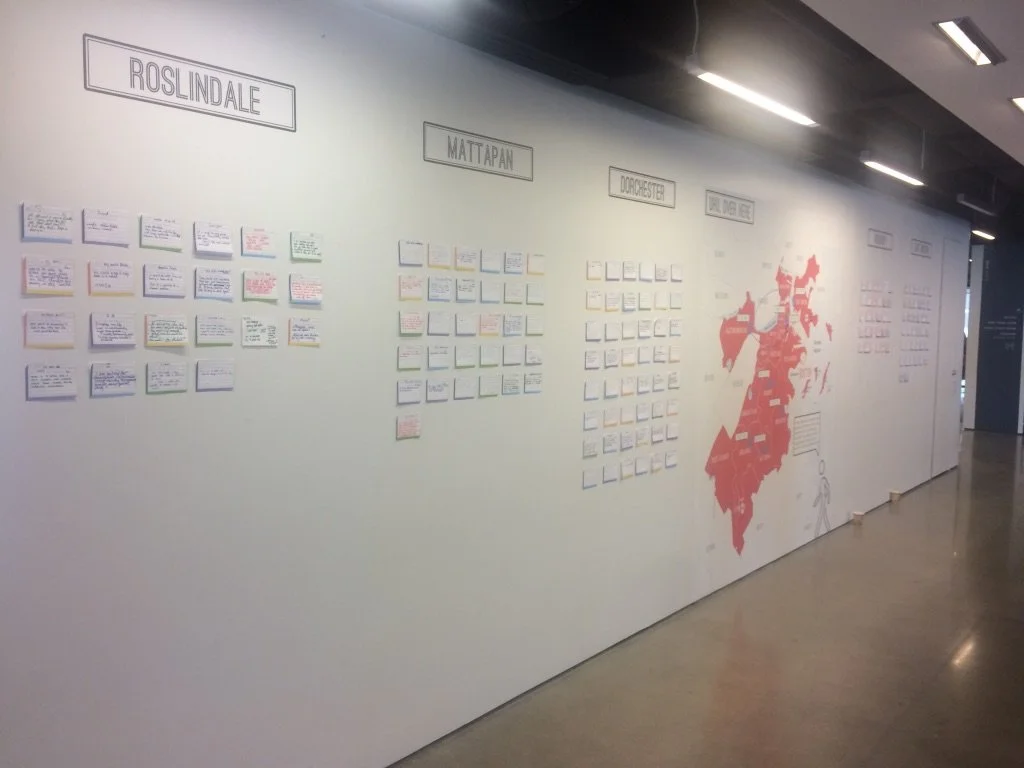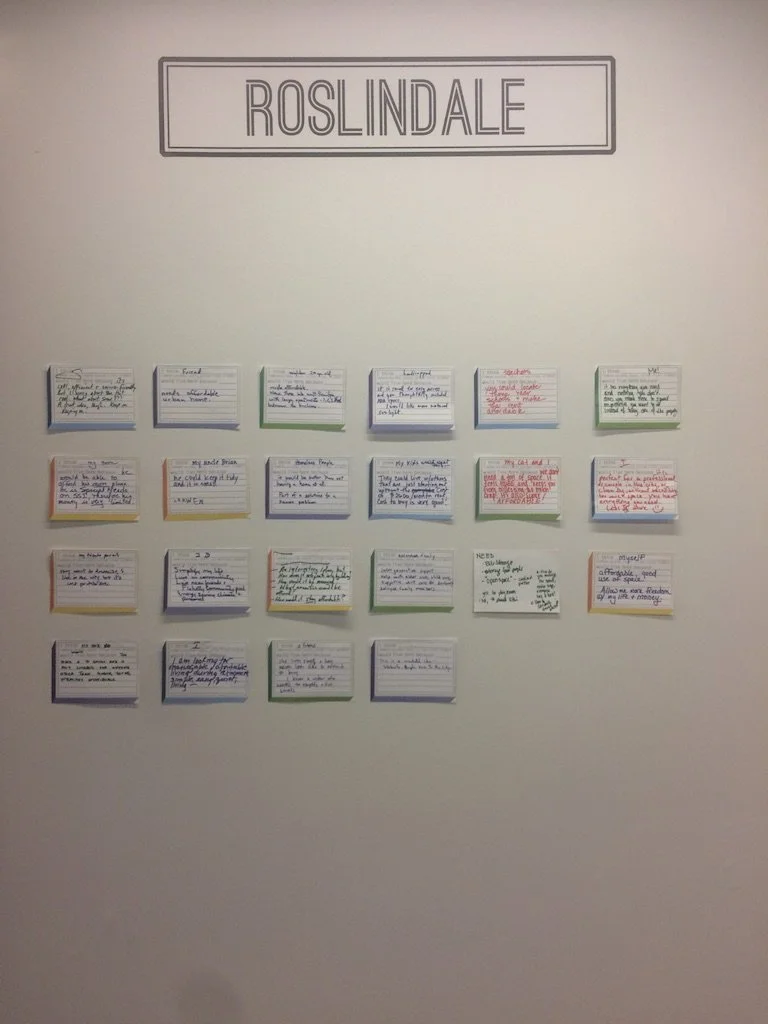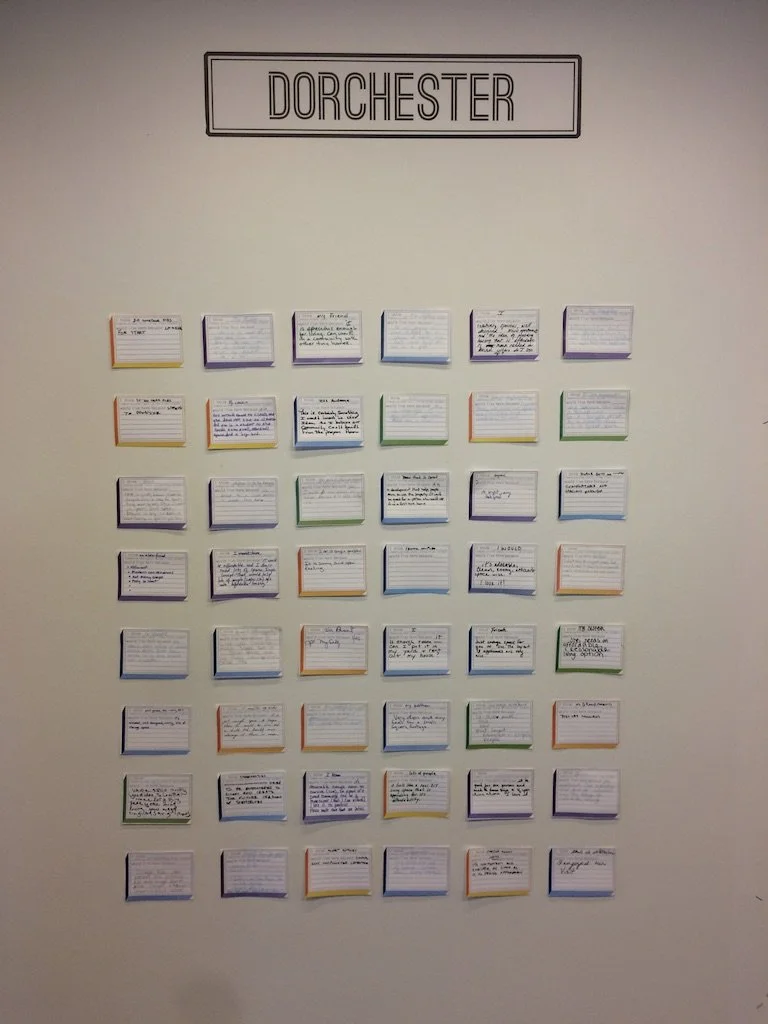Urban Housing Unit Roadshow
Project Type
Research + Speculative Design + Design Strategy
The Urban Housing Unit (UHU) Roadshow was a model for redesigning civic engagement and prototyping Housing Policy. It featured a speculative-housing exhibition on wheels and was intended as a space for Bostonians to learn and provide input about the impact and possibilities of alternate housing typologies.
Role
Program Manager
Mayor’s Housing Innovation Lab,
City of Boston
PARTNERS
Boston Society of Architects
Department of Neighborhood Development
Mass Bay Transportation Authority
Boston Public Libraries
WHAT’S IN Research Group
Livelight Inc.
Project Timeline
Mar-Dec, 2016
Bostonians tour the Urban Housing Unit and provides feedback on design and policy considerations.
Challenge
Boston is in a housing crisis.
Zoning, permitting, and policy have played a serious role.
As have standard operating procedures for real estate developers and construction companies.
The conventional policy and development approaches do not meet the needs of low and middle income households.
Exploration and experimentation with new approaches is necessary.
Approach
I led a co-design process with communities and organizations across Boston to design over 25 interactive and experiential participatory design, civic engagements.
Human Centered Research Process included:
Ethnographic Interviews and observation;
Cultural Probes;
Experimental Civic Engagement Strategies.
I also led the synthesis, coding, and re-organization of findings into community-centered, affordable housing design guidelines.
Outcomes
Research findings and Design Guidelines enabled two major policy shifts:
Compact-Living Policy
Allows new buildings to include small, efficient housing units as long as they meet certain requirements.
Additional Dwelling Unit Policy
Allows owner occupants to carve out space within their homes to create smaller, independent units.
This project has also been cited as a precedent for civic engagement innovation and policy co-design, in:

